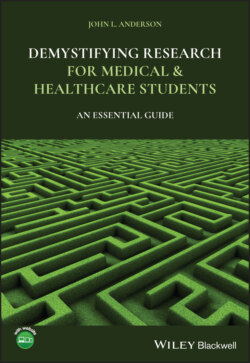Читать книгу Demystifying Research for Medical and Healthcare Students - John L. Anderson - Страница 55
Phase I Clinical Trials in Oncology
ОглавлениеCancer Research UK (who funded the unit I used to work in) give the following information about Phase 1 Oncology trials:
Patients are recruited very slowly onto phase 1 trials. So even though they don't recruit many people, they can take a long time to complete.
They are often dose escalation studies. This means that the first few patients that take part (called a cohort or group) are given a very small dose of the drug. If all goes well, the next group have a slightly higher dose. The dose is gradually increased with each group. The researchers monitor the side effects people have and how they feel, until they find the best dose.
In a phase 1 trial you may have lots of blood tests because the researchers look at how your body copes with and gets rid of the drug. They carefully record any side effects you may have and when you have them.
The main aim of phase 1 trials is to find out about doses and side effects. They need to do this first, before testing the potential new treatment to see if it works. Some people taking part may benefit from the new treatment, but many won't.
(CRUK 2020)
Phase 1 oncology trials are usually conducted using people who have cancer, and who have had all the treatments that are available, but which do not help anymore. They usually have to have a life expectancy of at least three months – so that they can be complete the trial (Arkenau et al. 2008). They are not usually paid for taking part, unlike non‐cancer clinical trial participants. The trials can involve a large commitment, both in terms of time, travel, and discomfort.
One of the dangers of taking part in a Phase 1 trial in the hope of finding a last‐minute, miracle cure is the therapeutic misconception – the belief that they are receiving treatment to help ‘cure’ their cancer. Thus, the way in which trial doctors explain the purpose of the trial and what they will go through has been subject of concern and they has been subjected to a lot of scrutiny. People with such advanced cancers have little hope of a miraculous cure. Sure, there is always that one grain of hope that there will be a trial of a new wonder drug which might save their lives – and no one would want to take any hope away. But we should not raise their expectations unduly. On the plus side, participants do get a lot of attention when they are on the trials. They are monitored carefully and anything significant can be communicated to their GP or Oncologist. They have something to hope for – and this can be very important to some people. However, like many of the chemotherapies which many participants would have been on in the past, there can be quite serious, even life‐threatening, side effects of the agents they are given. It is a big commitment and I have every respect for those who say ‘I am doing it for the benefit of others’.
One team published a paper in 2008, summarising the results of 29 Phase 1 trials at the Marsden Hospital in London. They analysed the outcomes of 212 patients who took part in these trials. Arkenau et al. describe them thus:
A total of 148 patients (70%) were treated in ‘first in human trials’ involving biological agents (132 patients ) or new cytotoxic compounds (16 patients ) alone and 64 patients (30%) received chemotherapy‐based regimens with or without biological agents.
I have highlighted their use of the terms ‘patients’ and ‘treated’. (This type of terminology was common when Rachel Ballinger and I did our analysis of communication between trial doctors and potential trial participants – I shall describe this later in Chapter 14) These terms perpetuate the therapeutic misconception – ‘I am still a patient being treated’.
Arkenau et al. evaluated the tumours before the third cycle of the trial – between weeks 6 and 8. They reported a ‘partial response’ in 19 people (9.4%), stable disease in 88 people (44%), and progression of disease in 95 (47%). ‘The 30‐ and 90‐day mortality was 1.9% (4 out of 212) and 18.3% (39 out of 212), respectively. Treatment related mortality was 0.47% (1 out of 212) and 11.8% (25 out of 212) of the patients have been withdrawn from an ongoing study due to toxicity’ (Arkenau et al. 2008). So, half a percent of people died because of the effects of the trial agents (or ‘treatments’ as they were described). They concluded:
This analysis demonstrated that treatment within the context of a phase I trial could be considered as a valuable therapeutic option. Interestingly, those trials incorporating classical cytotoxics were associated with a better outcome. Clearly, this relates to patient selection, particularly when the trial may involve the use of a cytotoxic in chemonaive cases. The treatment in our cohort was generally well tolerated and treatment‐related deaths and toxicities were low. Moreover, a significant number of patients achieved disease control for a significant duration. However, the challenge remains in appropriate patient selection and for this, the use of an objective clinical score could be a helpful tool.
(Arkenau et al. 2008)
Now, here is a challenge for you: (i) What sense do you make of these findings? (ii) What is missing from these trials? (My thoughts are given at the end of the chapter.)
